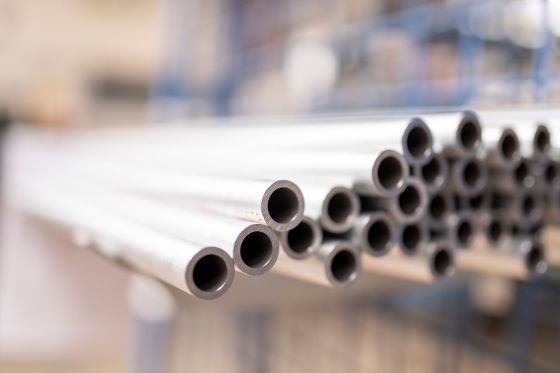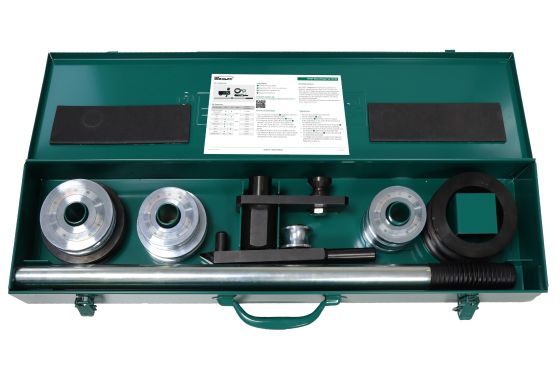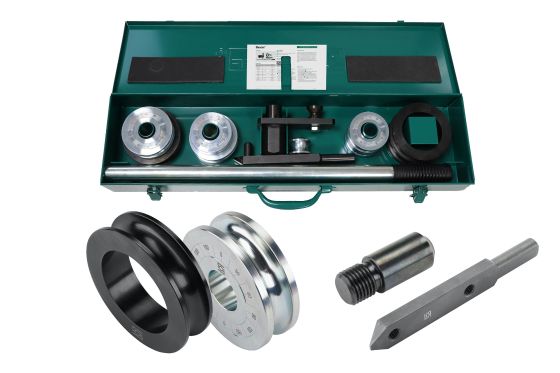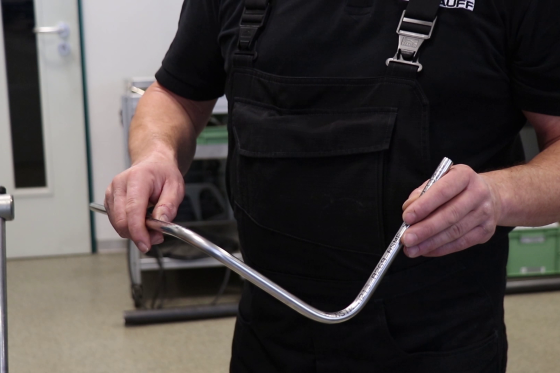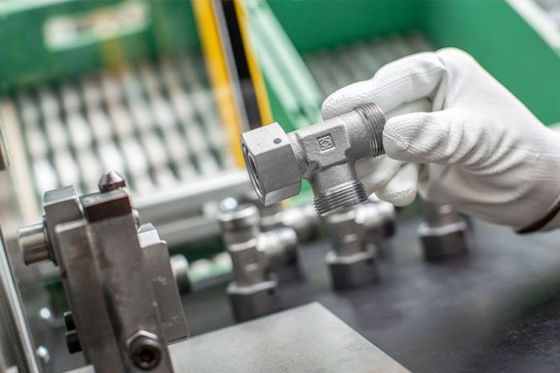Worn Bending Rolls
One of the most common mistakes in bending hydraulic pipes and tubes is using worn or deformed bending rolls. These can damage the pipe or tube during bending or affect the precision of the bend. Foreign objects or dirt in the bending area exacerbate the problem.
Solution:
Use wear-resistant bending rolls, ideally made of galvanized or blued steel, ensuring precise bending without damage.
A quality transport case protects the tools on-site from dirt and foreign objects, keeping the bending rolls intact.
Inappropriate Bending Tools
Many use simple bending pliers designed for pipes and tubes made of softer materials like copper. However, these tools are unsuitable for steel or stainless steel pipes and tubes, which require more force and precision.
Solution:
Opt for professional manual pipe and tube benders from STAUFF. These feature an extension lever and a base plate designed for secure clamping in a vise, making it significantly easier to bend harder pipes and tubes.
Radius Too Small
The bending radius determines the curvature of the pipe or tube. A radius that is too small can cause the pipe or tube to wrinkle or flatten on the inner side, changing the cross-sectional shape and impairing durability and flow characteristics.
Solution:
As a rule of thumb for steel and stainless-steel hydraulic pipes and tubes: Ensure the bending radius is at least twice the diameter (r ≥ 2d). For a pipe or tube with a diameter of 15 mm, the bending radius should be at least 30 mm.
STAUFF manual pipe and tube benders provide bending rolls designed for these requirements, such as a bending radius of 40 mm for 15 mm pipes and tubes.
Insufficient Pipe or Tube Wall Thickness
Bending pipes and tubes with insufficient wall thickness can lead to wrinkling, flattening, or even cracking. In hydraulics, this can create dangerous situations if the pipe or tube bursts under high pressure, releasing hydraulic oil.
Solution:
Use pipes and tubes with adequate wall thickness. STAUFF manual pipe benders are optimized for common wall thicknesses starting at 1.5 mm, ensuring both precision and safety.
Bend Too Close to Pipe or Tube End
Bending too close to the pipe or tube end can make it difficult to install cutting ring fittings. If the distance between the pipe or tube bend and end is too short, the fitting may not be mounted properly.
Solution:
Maintain a minimum distance: The straight pipe or tube end before the bend should be at least twice the length of the union nut. For a 15 mm pipe or tube, this distance should be at least 34 mm.
Pipe / Tube Springback Not Considered
When bending pipes and tubes, springback often occurs, where the pipe or tube partially returns to its original shape after bending. Failing to account for this can result in an inaccurate final bend angle. Check out our blog post on this topic: Automatic Correction During Production | STAUFF. Read here how springback is corrected in automated manufacturing.
Solution:
Bend the desired angle by 1 to 2° more to compensate for springback.
STAUFF pipe bending devices come with a laser-etched, wear-resistant scale to help you determine the correct bend angle precisely.
STAUFF Products for Manual Pipe and Tube Bending
At STAUFF, you'll find a wide range of professional tools for precise and safe bending of hydraulic pipes and tubes. Our manual pipe benders are optimized for the requirements of steel and stainless-steel pipes and tubes and offer more stability and control through the extension lever and base plate. The bending rolls, equipped with a scale for precise angle display, ensure consistent results, even under demanding conditions. Our products are robust, durable, and designed to withstand the toughest conditions on-site or in the workshop. Registered customers also have access to special product information and benefits. Interested? Check out our online store and make manual pipe and tube bending a breeze. You will also find all components of the STAUFF portfolio here. Watch the video to see how quickly and easily the STAUFF pipe bending device can be used.
FAQs
What happens if the bending rolls are worn?
Which tools are suitable for bending steel or stainless-steel pipes and tubes?
Professional manual pipe and tube benders with an extension lever and base plate are ideal for harder materials like steel or stainless steel.
How large should the bending radius be when bending hydraulic pipes and tubes?
As a rule of thumb, the bending radius should be at least twice the pipe diameter (r ≥ 2d).
What happens if the pipe or tube is bent too close to the end?
The straight pipe or tube end before the bend should be long enough to allow easy installation of cutting ring fittings.
How can I compensate for pipe springback when bending?
To compensate for springback, bend the desired angle by 1 to 2° more.
Where can I buy high-quality pipe bending tools online?
You can purchase high-quality pipe bending tools, specifically for steel and stainless steel pipes and tubes, directly from STAUFF. Our online store provides access to a wide selection of professional manual pipe benders and accessories optimized for hydraulic applications.
Newsletter Subscription
Never miss a new post on the STAUFF Blog!



